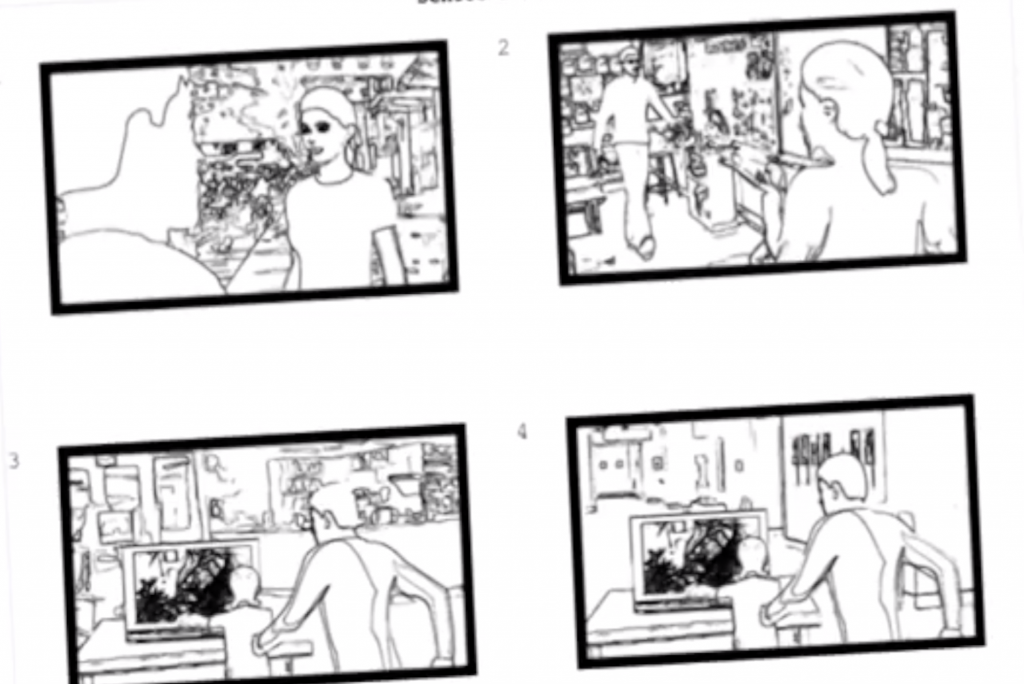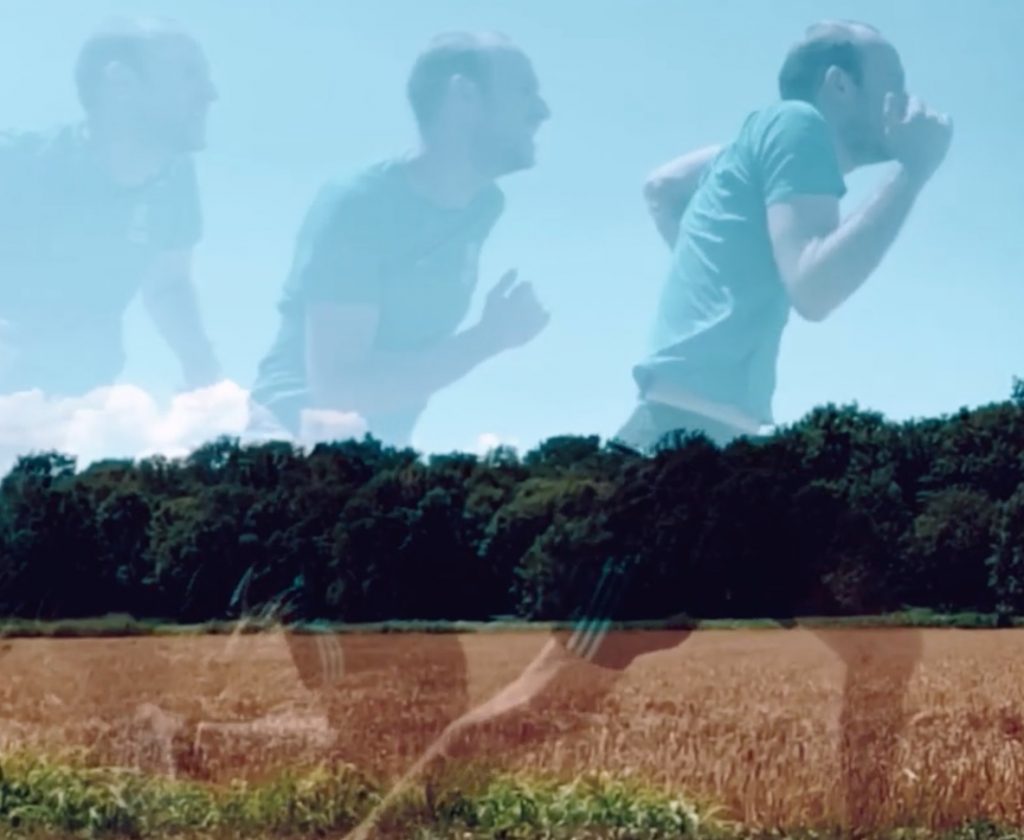“Like Us” combines documentary and fictive techniques to illuminate the core values of human-canine friendship. Based in Los Angeles, Ian Leer shot the footage over many years, and then shaped it into a memorable movie. He talks about the process in an interview below.
Interview with Ian Leer
MMM: What made you want to be a filmmaker?
Leer: I discovered I wanted to become a filmmaker through acting. The original plan was limited to making a name for myself in front of the camera. An aspect of the acting world I could never get used to was waiting around for permission (an opportunity) to act. Consequently, I started writing short films for myself and working with other filmmakers to get them made. That opened my eyes to more possibilities behind the camera, and I decided to take seriously my newly-discovered passion for filmmaking as well.
MMM: How did you develop your filmmaking skills?
Leer: My filmmaking skills are still (and will always be) developing, but my current skill level and confidence comes as a result of a decade of trial and error, video tutorials, and film school. Solid filmmaking resources today—like No Film School and Film Riot”—give young filmmakers a variety of options.
MMM: Did any filmmakers influence your work?
Leer: I have used FiLMiC Pro for a number of years, and that led me to finding a mobile filmmaking community online and at festivals like MoMo (Mobile Motion Film Festival) in Switzerland where I was inspired by Andrea Holle, Simon Horrocks, and Jason van Genderen (of the #Filmbreaker movement) to take more seriously the mobile approach to filmmaking. I would be remiss not to mention Sean Baker’s influence on me as well, namely in his mobile-device-captured Tangerine film.
MMM: What gave you the idea for making a movie about the human-canine relationship?
Leer: “Like Us” is a tribute to Maxie, the dog who has taught me more about friendship and unconditional love than I had previously known. I have always loved dogs, but I ignorantly missed out on the true connections one can have with these emotionally-connected creatures. We are better off in this world because of our relationship to these animals, and I wanted to create something that honored that fact and highlighted the irony of non-humans teaching us humanity. Maxie is a senior dog, so it was also important for me to achieve a tone in this film that reminds us all of the finite time we have with them.
MMM: How do you categorize the movie?
Leer: Genre-bending is probably a good descriptor. It falls somewhere between a documentary and a drama, but it is fiction. Let’s just list it under experimental.
MMM: How did you plan the shoot?
Leer: I collected a lot of documentary footage of Maxie over the years (as one does with his/her dogs), with no clear vision of what I was going to do with it. The images were captured spontaneously in multiple locations. I guess keeping my camera handy was also part of the planning. Then, because I wanted to enter the FiLMiC Pro Film Festival, I began the process of shaping the narrative into a documentary (my first), with the visuals and editing style informing the ultimate voiceover.
MMM: What camera did you use?
Leer: More than one. The past sequences were captured with an iPhone 7 Plus and an iPhone 8 Plus. The present sequences were captured with the iPhone Xs.
MMM: Any advantages in using the iPhone?
Leer: The greatest advantages are convenience and instant availability. Stories can be captured virtually anywhere nowadays, and the technological advancements seen in the iPhone cameras and FiLMiC Pro software make it just as competitive with expensive high-end video cameras. The images rendered on a mobile device do face some optical limitations, but there is a modified language to mobile filmmaking that is just as effective.
MMM: Did you use any other gear?
Leer: Everything was handheld.The running sequence near the end illustrates my fascination with filmmaking gadgets—in this case the FlowMotion One image stabilizer. I also used the Beastgrip Pro camera rig and the Moondog Labs 1.33x Anamorphic Lens with variable ND filter.
MMM: Were there any challenges in the filming?
Leer: Working with dogs is an advanced exercise in focus pulling and changing your mind about where “the mark” should be. Luckily Maxie wasn’t rambunctious, so it was relatively easy to get great shots with her. She is used to me putting a mobile device on her, and I think she secretly wants to be an LA model/actress.
MMM: Could you tell us about the locations?
Leer: The idea was to capture Maxie in her element, her favorite spots, at the two local parks we frequent. While editing this footage together I felt like something was missing. I knew the loose narrative I was piecing together needed to start with frames that portrayed something closer to dismal and broody. As fate would have it one cloudy day while driving home from Malibu, I stopped my car along a mountain overview looking out over the ocean, and I knew this felt right. I grabbed my camera rig and my dog out of the backseat, and we filmed there for about five minutes. Her introspective “acting” was on-point that day! The final shot in the film (overlooking a valley from atop a mountain) was a bookend to the opening shots and was conceived during editing as well. This location is a ten-minute drive from my house. I have driven past it many times over the years before finally being able to memorialize it cinematically.
MMM: The narration is the key here.
Leer: It was the last step in the assembly of the locked cut. It took me a few days to put down in words what I previously only saw in mental images. I tend to write poetically, and I felt this was the perfect project to highlight that kind of writing. My goal was to leave the viewer to answer the question: How do you want to be remembered?
MMM: What was the process of recording the narration?
Leer: Ever the indie-filmmaker I recorded the voiceover in my closet with a Zoom recorder. I then edited the audio in Adobe Audition CC. Since releasing the film online I have also reached out to my international friends and had multiple versions recorded in Arabic, German, Swiss German, and Ukrainian so far. They each used a similar method to record their audio, and then I edited their audio in Adobe Audition CC as well. I’d like to add more foreign language versions to the collection, so I invite readers to contact me if you’d like to record in your language, too.
MMM: Is there a story about the haunting music?
Leer: The music was simply and expertly composed by my favorite Egyptian composer, Hatem Elgenedy, with whom I have worked on multiple films now. The idea was to cause introspection, and this music was perfect for bridging the images to the narration. While I’m an advocate of finding a film composer to conceptualize a perfectly unique score, I admittedly also used stock music in this project, mainly because of time constraints.
MMM: Could you talk about your approach to the editing?
Leer: With this being my first documentary approach to storytelling I created the entire narrative during the editing stage. I started by assembling rough-cuts of the scenes/sequences I thought I needed. These were edited with temp music to maintain the appropriate rhythms and pacing. I would show these individual scenes with temp music to friends to get a sense of how they were reacting to it and what kinds of thoughts popped into their heads as a result. With that information I modified some of the visuals (sometimes just removing a few frames here and there). Then came the writing and recording of the voiceover, and I finished with the composed music and titles. I used Adobe Premiere Pro CC and Adobe Audition CC.
MMM: Have any advice for a beginning moviemaker?
Leer: Yes, do it. Trial and error is your friend. Focus less on the commercial viability of your first few projects and more on your resourcefulness and the effectiveness of your narrative skills. Everyone has an opinion, and sometimes he/she may be right in his/her opinion…. Do it your way anyway. Experience is the only way to get to know and trust in your storytelling gut instincts, including when not to go with those instincts. Find your team, preferably one or two collaborative creatives who just enjoy the process and share similar storytelling goals as you. And finally, connect with publications and communities like Mobile Movie Making Mag and Mobile Motion Film Festival. Support is also your friend.
You can keep up with Ian Leer on Instagram and Twitter.
The editors of MobileMovieMaking Magazine have chosen “Like Us” as the Mobile Movie of the Week.



 Previous post
Previous post
 Next post
Next post





